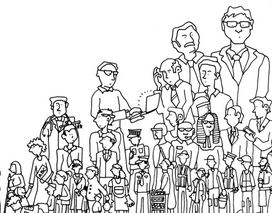Some time ago, I read Virginia Woolf’s Three Guineas. I remember that upon finishing the book I felt compelled to: (1) thank the Almighty for allowing me to be born after the mid-century mark; (2) join an organization for women that supported the advancement of women in professions and equal pay for equal work; and (3) support those running for political office who profess an aversion for war.
 Western countries have made a lot of progress since 1938, the year the book was originally published. No longer do women have to rely on charm to procure money from their fathers, brothers, and/or husbands. No longer is marriage the only “profession” open to women. No longer are women denied the opportunity to acquire an education. No longer are the opinions of women considered to be without value. We’ve come a long way! Bold, courageous, and visionary women were tireless in their efforts to secure human and constitutional rights, one-by-one, for us.
Western countries have made a lot of progress since 1938, the year the book was originally published. No longer do women have to rely on charm to procure money from their fathers, brothers, and/or husbands. No longer is marriage the only “profession” open to women. No longer are women denied the opportunity to acquire an education. No longer are the opinions of women considered to be without value. We’ve come a long way! Bold, courageous, and visionary women were tireless in their efforts to secure human and constitutional rights, one-by-one, for us.
But as champions of capitalist systems and with income in our possession, have we lost as much as we’ve gained? Are we not like men who leave the house at dawn and return at nightfall? Have we little time to acquaint ourselves with our children? Has time for friendship, travel, and art nearly vanished? Don’t we too feel the itch of dog collars inscribed “For God and Country?” Are we leading lives and professing the same loyalties that professional men have professed for thousands of years (70)?
Are we leading lives of quiet desperation? (nod to Henry David Thoreau)
Yes, and it’s “so momentous an occasion in the history of civilization that some celebration seems called for (101)!”
Women who earn their livings posses the powerful weapon of independent opinion. With a mind of their own and a will of their own, women have the ability to influence society.
Woolf speaks of young women who passively absented themselves from church services. For years women had predominated congregations by a ratio of 75% to 25%, but the situation changed as the population of women students increased. “Among the student population the young women were, on the whole, farther away from the Church of England and the Christian faith than the young men (117-118).” By making their absence felt, these women made their presence become desirable (119).
What if all women in civilized countries absented themselves for a weekend – retreated to the wild and left society to itself? It’s fun to imagine the outcome. Could it be the catalyst that would finally move politicians, the majority whom are men, to write into law a benefit that women have been seeking for years – equal pay for equal work? Could women gain other benefits as well, such as stronger laws to protect them from abusers? What if women in backward countries, those where they are mere chattel, escaped to the wild? Would honor killings cease? Could they earn the right to uncover their heads? If we made our absence felt, would our presence become desirable?

 After yesterday’s discussion about the Caste system in school, I whipped up a little handout to help the kids get their ideas flowing and in order about how the actual Caste systems that work in our schools.
After yesterday’s discussion about the Caste system in school, I whipped up a little handout to help the kids get their ideas flowing and in order about how the actual Caste systems that work in our schools. The quest of mobile phone companies to develop more GPS-enabled handsets might even benefit different social networking Web sites. According to Reuters, global positioning chips will evolve from simply giving directions to locating friends and even meet new people.
The quest of mobile phone companies to develop more GPS-enabled handsets might even benefit different social networking Web sites. According to Reuters, global positioning chips will evolve from simply giving directions to locating friends and even meet new people. “I mean, look,” said one student in class. “The boy and the girl in the ‘Checkouts’ story totally could have fallen in love, but they were afraid of moving too far from their caste, and so they just gave up and went the easy way. And then in ‘Born Worker’ Jose totally got jacked because he let Arnie take all the credit when he should have, like, kicked him in the nuts and said: ‘He’s totally lying to you, I’m the one who save that old guy!’ And then there’s the two kids in ‘Oranges’ who come out good in the end, and nothing goes wrong ’cause they atually told each other what they wanted from each other.”
“I mean, look,” said one student in class. “The boy and the girl in the ‘Checkouts’ story totally could have fallen in love, but they were afraid of moving too far from their caste, and so they just gave up and went the easy way. And then in ‘Born Worker’ Jose totally got jacked because he let Arnie take all the credit when he should have, like, kicked him in the nuts and said: ‘He’s totally lying to you, I’m the one who save that old guy!’ And then there’s the two kids in ‘Oranges’ who come out good in the end, and nothing goes wrong ’cause they atually told each other what they wanted from each other.” Western countries have made a lot of progress since 1938, the year the book was originally published. No longer do women have to rely on charm to procure money from their fathers, brothers, and/or husbands. No longer is marriage the only “profession” open to women. No longer are women denied the opportunity to acquire an education. No longer are the opinions of women considered to be without value. We’ve come a long way! Bold, courageous, and visionary women were tireless in their efforts to secure human and constitutional rights, one-by-one, for us.
Western countries have made a lot of progress since 1938, the year the book was originally published. No longer do women have to rely on charm to procure money from their fathers, brothers, and/or husbands. No longer is marriage the only “profession” open to women. No longer are women denied the opportunity to acquire an education. No longer are the opinions of women considered to be without value. We’ve come a long way! Bold, courageous, and visionary women were tireless in their efforts to secure human and constitutional rights, one-by-one, for us.